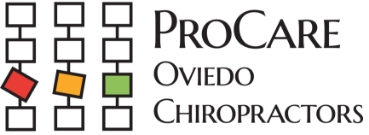In car accidents, passengers and drivers are often times left with arm injuries. Today, we are sharing different arm injuries and the anatomy of the arm. Follow along to find out how knowledgable ProCare Health & Rehab Centers’ medical professionals may benefit your healing journey.
Arm injuries:
There are 206 bones total in the human body. There are three bones in each arm. Inside each arm, humans have a humerus, radius, and ulna.
Along with bones, there are nerves, muscles, joints, tendons, and other connective tissue. First, lets discuss sprains. A sprain is a stretched or torn ligament.
 This is the least serious arm injury a person can have besides a bruise or a scratch. Ligaments are simply tissues that connect bones at a joint. Simple, daily movements can cause a sprain.
This is the least serious arm injury a person can have besides a bruise or a scratch. Ligaments are simply tissues that connect bones at a joint. Simple, daily movements can cause a sprain.
Ankle and wrist sprains are the most common as people can change direction and simply sprain their ankle. Wrist may become sprained during light exercise. It is not uncommon to come out of a car accident with a sprain either.
In some instances, more than one ligament may be stretched or torn. In contrast, a sprain and strain often are used interchangeably. However, a strain is an injury to a muscle or tendon.
Basically anyone is at risk of a strain or sprain because they happen so commonly. The symptoms of sprains include:
- pain
- swelling
- bruising
- inability to use the joint
Symptoms of strains include:
- pain
- muscle spasms
- swelling
- cramping
- trouble moving
Causes of strains and sprains:
In addition to car accidents, causes of sprains include:
- falls
- tripping
- awkward movement
- twisting of the knee
Strains may be caused by car accidents, sports injuries, and falls as well. In addition, lifting heavy objects, over stressing muscles, and recent injuries can cause strains.
Treating sprains and strains:
Although strains and sprains may be treated easily, they require patience to be truly healed. If you have had a recent injury, you are at more risk for another strain or sprain as the area is not quite the post-injury. For starters, the area must be rested.
If the ankle or knee area is affected, a doctor may prescribe the use of crutches or a cane. Icing the area for twenty minutes about four to eight times a day will reduce swelling and aid in recovery. Never put ice directly on skin as this poses threat for skin damage and may be too cold for the area.
 Use an ice pack or a bag of ice wrapped in a sanitized cloth. Your doctor may give you a special bandage, cast, boot, or splint to squeeze the injured area. This will help reduce swelling and keep your mindful of resting the injury.
Use an ice pack or a bag of ice wrapped in a sanitized cloth. Your doctor may give you a special bandage, cast, boot, or splint to squeeze the injured area. This will help reduce swelling and keep your mindful of resting the injury.
Rest the area in an elevated position when permitted by a doctor. Taking medicines such as ibuprofen or aspirin will help. Exercising the injured area properly will help prevent long-term stiffness and increase strength. Physical therapy is likely to be recommended as this will reduce the likelihood of re-injury.
Please contact our office if you are looking for a physical therapist experienced in basic everyday injuries to car accident injuries. Be mindful of wearing your mask when leaving the house and keeping your six feet distance at all times. While doing so, enjoy the upcoming 4th of July Holiday!
Staff Writer



